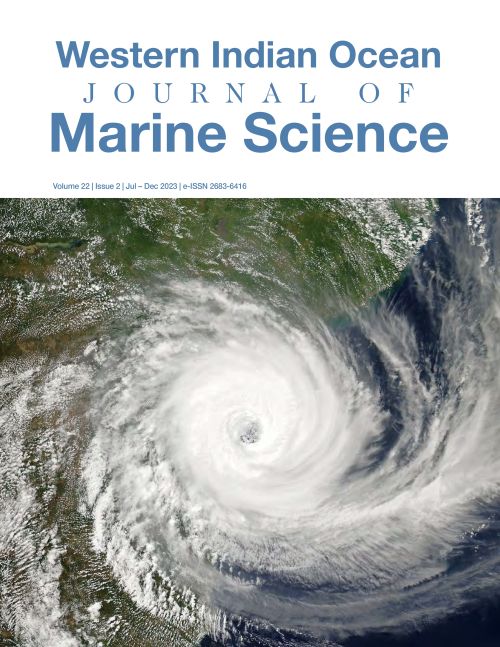Main Article Content
Phthalates in marine sediment, water and the cockle Anadara antiquata on the coast of Tanzania
Abstract
Phthalates are a group of chemicals used as plasticisers, and are easily released into the environment, where they degrade over time. We investigated the concentrations of phthalates in sediments, seawater, and the cockle Anadara antiquata from beaches at Dar es Salaam, Mtwara, Tanga and Zanzibar in Tanzania. A dispersive liquid-liquid microextraction method was used to extract analytes from samples, whereafter they were analysed with a gas chromatograph coupled to a mass spectrophotometer. Concentrations of diisobutyl phthalate (DiBP), dibutyl phthalate (DBP) and Bis(2-ethylhexyl) phthalate (DEHP) were determined. DiBP concentrations were highest at Dar es Salaam (11.5 - 12.4 ng/mL in seawater; 11.5 - 13.6 ng/g dry weight in sediments), compared to the other three sites, where minimum and maximum concentrations in sediments were 3.5 ng/g dw (Mtwara) and 10.7 ng/g dw (Tanga). DBP concentrations were also highest at Dar es Salaam (12.4 - 20.6 ng/mL in seawater; 12.1 - 18.7 ng/g dw in sediments) compared to 2.7 (minimum, Mtwara) and 11.2 ng/g dw (maximum, Tanga). DEHP at Dar es Salaam ranged from un-detected to 12.6 ng/mL in seawater and to 12.6 ng/g dw in sediments. It was further revealed that A. antiquata from Kawe Beach (Dar es Salaam) had higher concentrations of DiBP, DBP, and DEHP compared to other sites. Monitoring of phthalate concentrations will indicate pollution hotspots and trends in the region.







